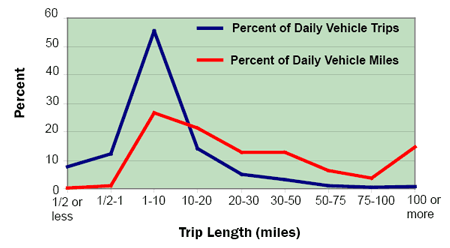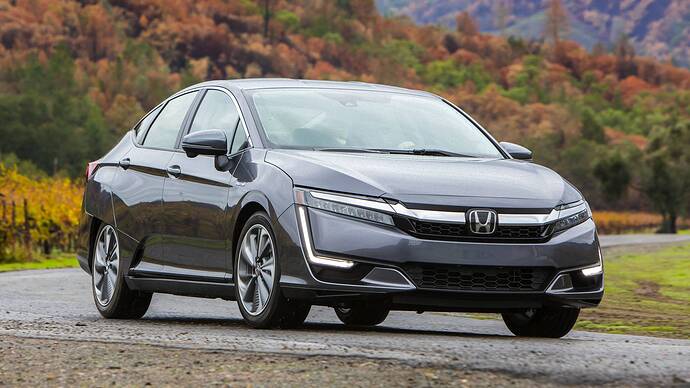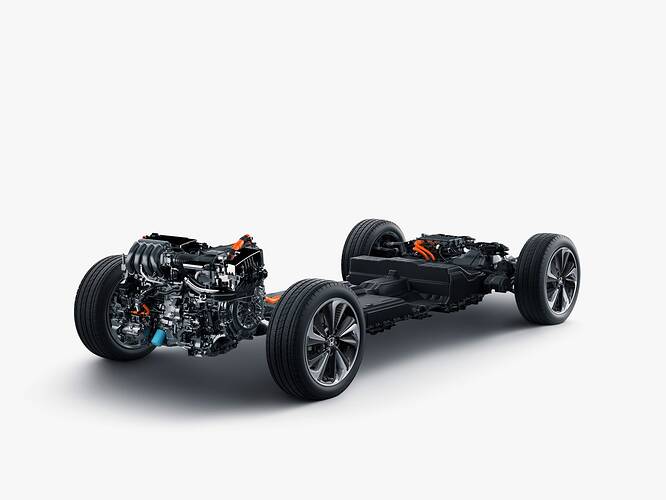i think to analyze EV vs PHEV vs ICE we need to split driving distances broadly into 3 categories - short, medium and long:
short - up to 20 miles ( mostly within electric range of PHEV )
medium - 20 to 100 miles ( mostly outside of PHEV electric range but comfortably within Full EV range )
long - over 100 miles ( when full EV range anxiety starts to set in )
and rate each ( EV, PHEV, ICE ) on each of those distances on a scale from 1 to 10 ( 1 = nightmare experience, 10 = perfect experience )
short distance:
EV: 9. no issues, just smooth power.
PHEV: 7. also no issues but engine may come on for a number of reasons ( such as to heat up the catalytic converter or engine oil or provide extra passing power ) which may be annoying.
ICE: 4. engine comes on as soon as you turn ignition. even if you never drive more than 1 mile away from your house you will eventually have to go to gas station to fill up, which may actually be further from you than the longest trip you take on a daily basis. this is stupid because you have an energy source ( the electrical grid ) at home but unable to use it.
medium distance:
EV: 8. no real issues, but minor range anxiety. depends on your personality though. i am a type of person who rarely lets my phone drop below 80% always keeping it on the wireless charger, whereas some people have their phone run through the battery until it shuts down before plugging it in. these people would never experience range anxiety - they would just experience tow trucks.
PHEV: 5. on a medium length trip PHEV will feel sluggish and noisy but will do the job and be slightly more efficient than ICE by a narrow margin, at least the first 20 miles will be nice. the reason people hate PHEVs is because they typically have under-sized engines in pursuit of maximum efficiency and as soon as battery is flat you feel just how under-sized the engine is.
ICE: 5. on a medium length trip ICE will feel lighter on the feet ( because literally 500 lbs lighter ) compared to PHEV, but will burn slightly more gas ( due to inability to cycle engine off, coast and use regenerative braking ). ICE feels better on medium trips than short ones because you’re not shifting gears as much on longer roads than in stop and go driving. the aggravation with both PHEV and ICE isn’t just the engine, but the transmission as well. the less you use it the less aggravating the experience ( as compared to smooth EV power ).
long distances:
EV: 2. will the charger work when i get there ? will i have to take some detour along the way ? what kind of charging speed am i going to get ? remember how road trips used to be before GPS ? who would voluntarily choose that for themselves ?
PHEV: 4. it will be just like an overweight ICE. without much stop and go driving there won’t be any real opportunity for hybrid system to save gas versus ICE as on highway speed the engine will stay on most of the time. you’re just going to have worse handling and braking in a more expensive car versus an ICE.
ICE: 7. this is where ICE shines - cruising on an interstate in 8th gear. this is why we don’t have electric planes - because burning fuel is the best way to cover long distances.
short, medium, long:
EV: 9, 8, 2
PHEV: 7, 5, 4
ICE: 4, 5, 7
but what percentage of your driving is short, medium and long trips ?
there is data for this !

so we’re looking at about 45% of miles in short trips, 40% in medium trips and 15% of miles in long trips …
this brings us to:
EV: 9 * 0.45 + 8 * 0.4 + 2 * 0.15 = 7.55
PHEV: 7 * 0.45 + 5 * 0.4 + 4 * 0.15 = 5.75
ICE: 4 * 0.45 + 5 * 0.4 + 7 * 0.15 = 4.85
and that’s pretty much how the pricing goes as well. keep in mind that EVs are far more expensive than they seem. for example Mercedes EQE is about the same price as Mercedes E class but when i sat inside it felt like a C class, and i should know since i had a C class for 3 years ( as well as an E class as a loaner for 2 weeks ).
so they CALL it eqE because it is PRICED as an E class, but what you get is basically an electric C class. this is how they hide the cost of the battery.
most other EVs and PHEVs find similar ways to hide the cost - for example in a Tesla the sunroof doesn’t open, there are no ventilated seats, the leather is “vegan” and so on - all of this is done to hide the cost of the EV powertrain and make it look like you’re getting a car that’s just as good as a Mercedes but Electric and at the same price … it’s a mild scam …
and like i said this isn’t unique to Tesla - basically all EVs suffer from this - including Mercedes itself …
people simply ACCEPT these shortcomings in EVs because they tell themselves that these are all “futuristic” features, and they want that quick, smooth EV acceleration and are willing to overlook the fact that they’re basically being lied to.
reality is that there is currently NO electric version of a nice car like S class or Panamera or Audi Q8 that isn’t nerfed in some way. for example EQS is less premium and has far less rear headroom than real S class. E-Tron Q8 is smaller and less premium and has less ground clearance than real Q8. and Taycan is smaller, less premium and has much smaller trunk than Panamera. these cars are NAMED and PRICED as if they are electric equivalents to the ICE models but they ARE NOT.


